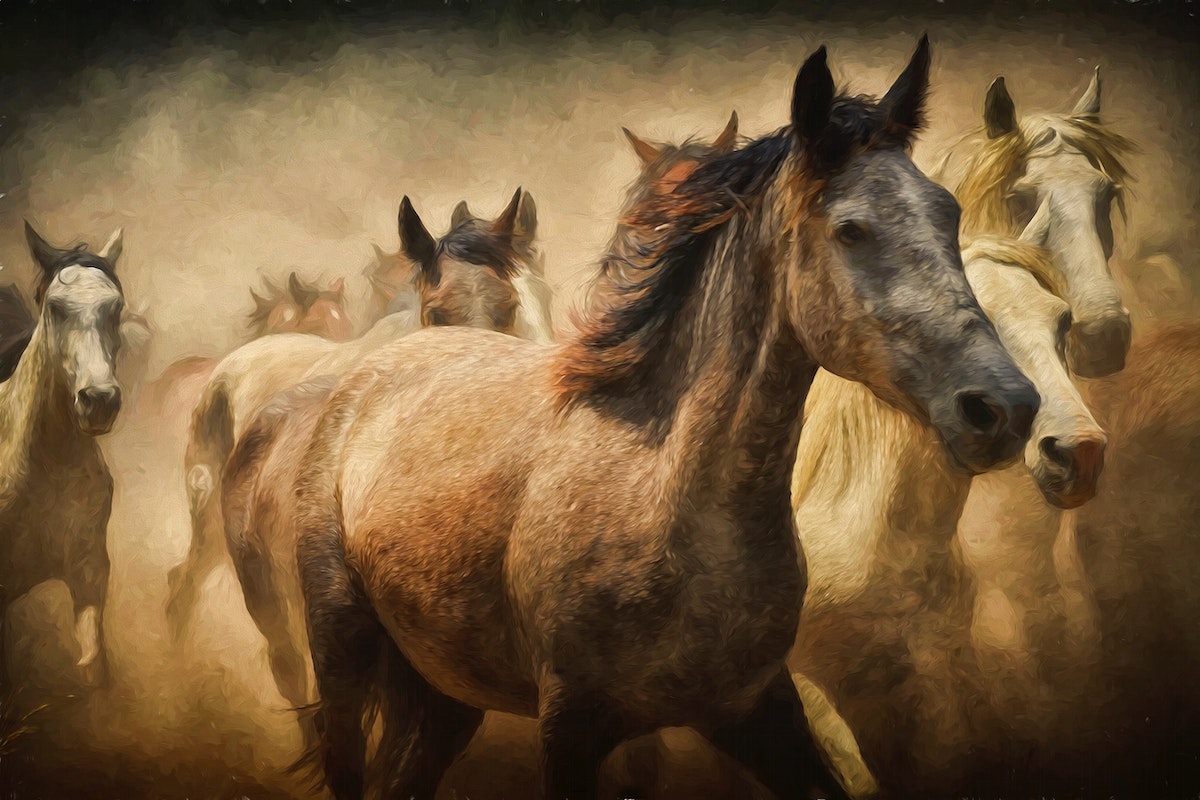How to Think More Clearly About Our Time
By: Dain Dunston (May, 2021)
The day the pandemic became real for me was on Monday, March 16, 2020. I was in Dallas to meet with a client who was planning on merging the high-flying commercial bank he had helped found with another fast-growing bank. Just a few days before, shutdowns had begun across the country. Even before St. Patrick’s Day crowds partied in bars the previous Saturday night, New York and other cities were shutting down large gatherings.
As I handed my car to valet at the swank steakhouse where we planned to meet, I saw a man walk up to the door of Starbucks. Instead of grabbing the door handle in the normal way, he reached up as high as he could to an area that surely no one else would have put their hands on and pulled it open. I think that was the moment I started to realize that our world was changing.
Inside the restaurant, there was a single waiter serving just two tables. He told us that the City Council was in session to decide what to shut down and how fast to do it. By the time I left (after carefully washing my hands) and got in my car for the drive back to Austin, the stock market was posting its biggest drop in history, falling nearly 13%, a bigger crash than 1929. It was hard to see from the vantage point of that single day, but our world was changing in ways that would take all of us time to understand.
Over the weeks that followed, we and our clients tried to make sense of what was going on and what it meant. The stock market bounced back. People swarmed supermarkets and there were shortages of food and paper products. Most people started wearing masks while others cried out that the whole thing was a hoax.
The following week, we hosted a webinar for our clients. It had been planned back in the previous December and the guest speaker was our Reservoir colleague and contributor, Eric McNulty, talking about his just released book on crisis leadership, You’re It: Crisis, Change, and How to Lead When it Matters Most. We couldn’t have timed the topic better.
The thing is, while there were certainly those who had expertise in the management of epidemics, most leaders and most of the public were not really read into the protocols. And as the societal and political “noise” started to compete with clear thinking, I decided I needed to find some perspective — a view from above the battleground.
So I began what I call “Reading in Other Centuries” to look at what was happening in our current century from a different mindset. Understanding that I had a limited ability to see what was going on in the moment when our history was being made, I wanted to know what our time would look like from the mind of someone in another era.
The Plague, by Albert Camus
Albert Camus’ The Plague seemed like an obvious place to start. The novel was published in 1947 and is set in the French colonial city of Oran, in Algeria. Although some claimed the book was an allegory about the Nazi occupation of France, in fact Camus reached back a century to a cholera epidemic that hit Oran in 1849. The story is told through a number of characters, the first of which is a doctor who treats the first plague patient.
What stands out is the level of denial. Although there is clearly something wrong with the city’s rats, who are dying in the streets, no one wants to cause a panic by saying so. The doctor confronts a city father at the train station with his concerns and, even as a station worker walks past with a box of dead rats, the official insists there’s nothing to worry about. It’s interesting how Camus captured the denial and the fear that taking action might be bad for business, even as everyone was beginning to notice that something was happening. As the city borders locked down, the people of Oran realized they were trapped.
That was early April, just as masks and waiting in line at the market had stopped feeling like a temporary emergency measure and were starting to feel normal. The shock, announced just before the first emergency measures, that South By Southwest had been cancelled was still hitting all of us in Austin, as was the idea, whether one was a fan or not, that the NBA was cancelling its season. Like the citizens in Oran, our lives were in lockdown and it was hard not to feel our homes had become walled cities.
The Splendid and the Vile, by Erik Larson
Late in April, a friend suggest I read Erik Larson’s book about Churchill’s first year in office in 1940. Asked to form a government on the day Britain declared war on Hitler’s Germany, there was no denial in Churchill’s approach and the story of how he used the months of the Phony War to build up the country’s defenses – particularly the air defense – is one of the great leadership and management stories of all times. But the most remarkable parts of the book were the journal entries from the Mass-Observation organization, which had been formed two years earlier to recruit volunteers to keep daily diaries.
The diaries were supposed to help sociologists understand ordinary British life, but during the months leading up to the Nazi blitz and then the months of the battle of Britain, when Londoners stood on the rooftops of their buildings and watched the waves of Luftwaffe bombers overhead, heard the bombs falling, and saw the blossoming, fiery explosions, their entries took on a deeper importance. Thousands and thousands of diarists shared their daily experience of the blitz and two trends emerged: the first was the comforting quality of tea, which “ran through the diaries like a river.” The second was the feeling, before Churchill ever said it, that in standing up to Hitler and his attacks this was their “finest hour.”
At Reservoir, we had been using that phrase with clients for weeks at that point, hoping we were right, and wanting clients to approach the lockdowns, furloughs, and remote work protocols with a positive outlook. Reading about the men and women of London (and other cities as the bombing spread) reminded me of Londoners I met when I lived there in the 1970s, who still referred to the war as the best years of their life.
Could this be true of our experience in the pandemic of 2020 and 2021?
A Woman Lit by Fireflies, by Jim Harrison
As the year moved into May, as markets and political statements continued to wobble, made worse by the rhetoric of presidential campaigns, I focused on finishing the first draft of the book I was working on, Being Essential, set to be released on February of 2022. And I was reading Jim Harrison’s A Woman Lit By Fireflies and wondering why Harrison didn’t have the Nobel Prize in Literature. The protagonist of the story, realizing her life is a trap (a lockdown, in 2020 terms) simply gets out of her car at a highway rest stop and while her husband is inside, climbs over a fence walks away into the cornfields. She leaves the prison she’s constructed in her life to start over again, to find her transformation. Many people I was working with, both clients and colleagues, were envisioning their own watershed moments that month.
There were signs that maybe things would sort themselves out. The President announced Operation Warp Speed to accelerate the development of a vaccine and that felt good, even though we were approaching 100,000 deaths from COVID-19. We needed that kind of good news, because the financial outlook was grim: a 38% drop in GDP on an annualized basis and 26 million more Americans unemployed that just six months before.
And then, on May 25th, a policeman knelt on the neck of a Black man named George Floyd and everything seemed to explode. Watching people rioting and looting stores, watching police smashing into peaceful crowds with tear gas and night sticks, holding their own form of riot; hearing pundits on both sides of the arguments calling for more action, it reminded me of what previously had been our worst year ever, 1968, the year of the assassinations, the year when it felt like the world was on fire. When, on June 1st, the President ordered tear gas, mounted police, and helicopters to clear demonstrators out of Lafayette Park so he could walk across it for a photo opportunity, him holding a bible in front of St. John’s Church, I turned off the television.
I knew I had to read a great deal farther back in history.
Musashi, by Eiji Yoshikawa
In Japan, a great battle in the year 1600 brought to an end a century of incessant warfare between feudal lords that had brought the country to its knees. The Battle of Sekigahara, established the Tokugawa dynasty and restored stability that lasted for more than 250 years. The novel was written in the 1930s and follows two very famous historical figures: Miyamoto Musashi, regarded as the greatest Samurai in Japanese history, and Takuan Soho, an affable and artistic Zen monk who became a confidant and advisor to some of the great leaders of the emerging Japan. His letters to leaders are still widely read in Japan.
It seemed to me that if I could walk alongside the minds of a Samurai and a Zen master, I would have a better sense of how to look at this decade in America, when it felt like our country was coming apart at the seams and a global pandemic felt like the least of our problems. With those two characters in my head. I thought I might have a better lens on our time.
It worked. Before long I was able to look at everything happening across that summer as an extension of every civilization. Sometimes there are good leaders, sometimes there are bad, but most times societies are run by human beings trying to do the best they can with the limited understanding they have. What are Republicans and Democrats anyway but Romans in neckties? The knowledge that we had been through this kind of societal insanity before made it easier to think about how to lead in times of disruption.
The secret of the Samurai is not to fight with strength but with attention. A warrior like Musashi understood that where his attention went his sword would go. His art was to use his attention to move his opponent off balance. Just one percent off balance and a swordsman has lost the ability to respond.
So it is with a leader. Takuan’s advice to leaders was to be always aware of where they placed their attention. “Look with real attention at the way the world is now,” he wrote to a leader, meaning that, like a swordsman, where your attention goes, that is where you can affect change.
We used that with our clients, watching for leaders who were trying to impose their anxious will on results instead of focusing on where their attention was. We taught a practice of radical self-awareness in which the leader is constantly asking questions about where she is and why, about who he is being and, in response, what he wants. That mastery of attention changes the ground on which the leader plays. And in the summer of 2020, we saw that clients who could call themselves back to attention were getting remarkable results from their organizations.
Astronauts who walked on the Moon had a word for the view of the Earth from space. They called it The Overview. We asked clients use that viewpoint to see themselves and their organizations. Viewed from a distance, their attention shifted from a reactive point of view to a generative and creative view. And as we moved into the fall of 2020 and coronavirus cases started to spike, that was the kind of view we all needed.
A Distant Mirror, by Barbara Tuchman
The title suggests that if you want to get a better perspective on the time in which we live, seek its reflection in other centuries. And if you want to feel better about our current century, go take a walk through the 14th century, when the Black Plague belly-flopped into the middle of the Hundred Years’ War and the specter of the climate change that led to The Little Ice Age.
The book is centered around the life of a single French noble named Enguerrand de Coucy, who not only held the title of Lord of Coucy but also Earl of Bedford when he married Isabella of England, the daughter of King Edward III. From that vantage point, and because he managed to survive almost all the bad luck of that century, the book is a long walk through a very bad time in human history.
The bubonic plague, which began in Italy in 1347, killed somewhere between 30 and 60 percent of the population of Europe and the Near East. Death was horrible and messy, with prolonged agony over several days, and nothing could be done to stop it. At first, family members tried to stay and care for their loved ones, with the result that the entire family often died. It didn’t long before family members began walking out the door. Parents left children, children walked out on parents. Whole villages became ghost towns. Compared to the plague, Covid-19 is a picnic.
One eerie connection between that time and this lies in the conspiracy theories that were popular. In the 14th century, some people thought the plague was caused by a conjunction of planets, in the 21st century we have people who think the pandemic was caused by the conjunction of 5G cellular technology and the Chinese Communist Party. They blamed Jews. In our time, people blame Asians. Or liberals. Or immigrants. And Jews, too. Almost all the conspiracy theories popular with modern fascists arose in the 14th century, and remains a plague on our minds today. Jewish neighborhoods were blocked off and all the inhabitants burned, even though Pope Gregory pointed out, reasonably, that just as many Jews as Christians were dying. And claims of fake election results and stolen votes? When Pope Gregory XI died, the Romans used intimidation and violence to install Pope Urban VI, while other Cardinals voted to install Pope Clement VII, with both sides claiming the election had been stolen.
What one can see in A Distant Mirror makes one thing clear: societies can go crazy, and yet somehow we survive. And not only survive, but improve. By virtually every measure, life in our present century is better than life in the 14th. Not for everyone, not all the time, but we’re getting there. If we can survive the challenges of our time, if we can bring clarity to leadership and integrity to our societal institutions, we will survive.
The March of Folly and The March of Awareness, by Barbara Tuchman
I could have also turned Barbara Tuchman’s next book, The March of Folly, which I first read when it came out in the 1980s. That book is a dance through the history of governments that pursued policies that were contrary to their own interests. From the idea to open the gates of Troy to the wooded horse, through the failures of the Popes described above, to the policies of King George III to the American colonies and, finally, to America’s involvement in Vietnam (and other, more recent wars), societal institutions are often their own worst enemies.
And where does that leave the rest of us? Seen through the long lens of time, it puts us in the position of accepting and appreciating where we are, the genius and the folly of our times and of the society we inhabit. At least, it’s not the 14th century. From that vantage point in the present moment, we ask a simple question: why are we here?
We can spend our lives watching partisan news and “liking” Twitter rants posted by bots. Or we can get busy being human beings, offering aid and comfort, observation and inspiration to those around us. We can lead what we can lead and try to influence what we can influence.
Like Miyamoto Musashi, we can be discerning in where we focus our attention and develop a clear view of the battleground. And if we do that, we can move at least part of our world back into balance.








